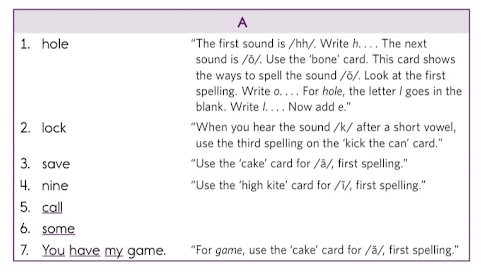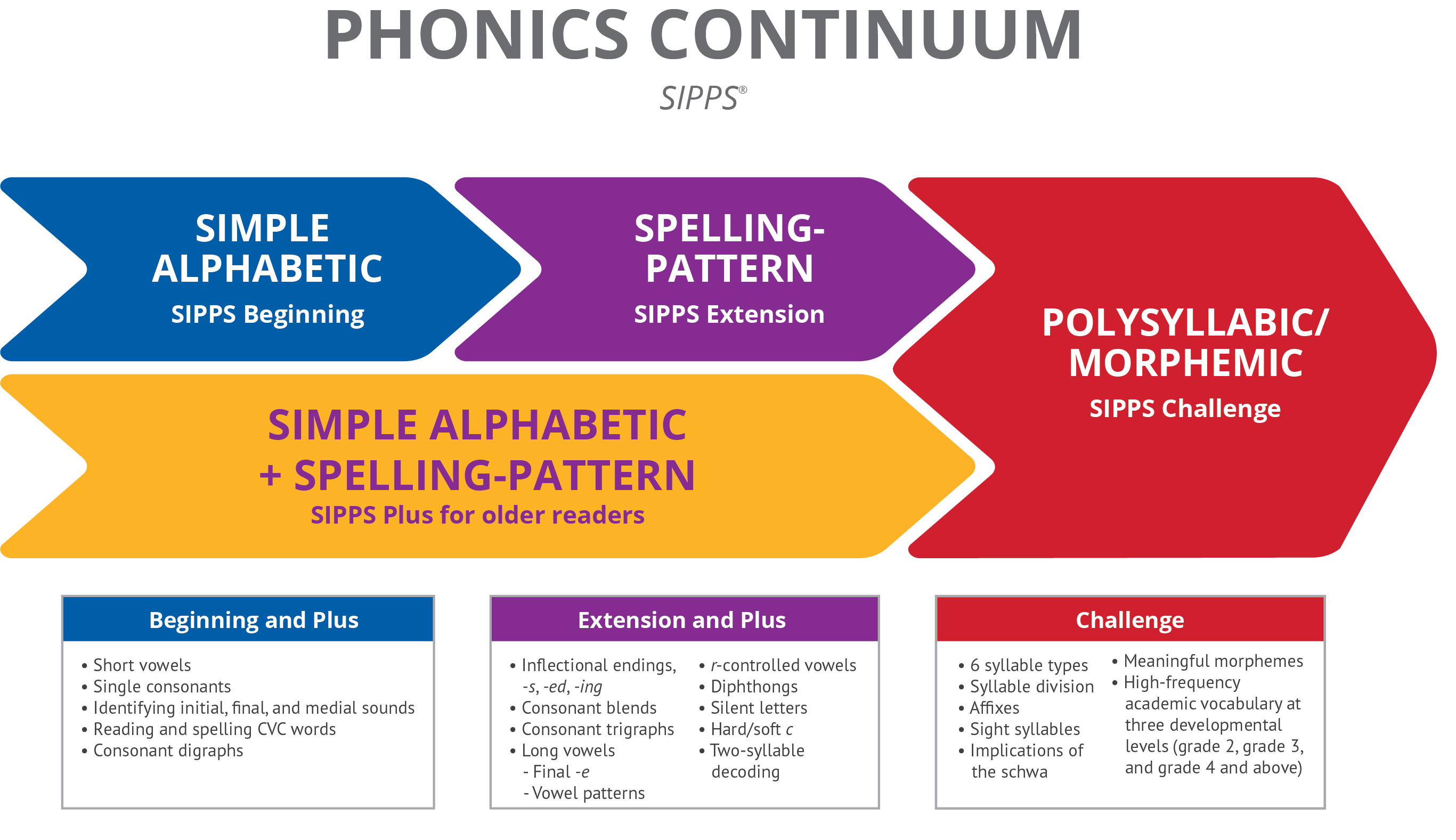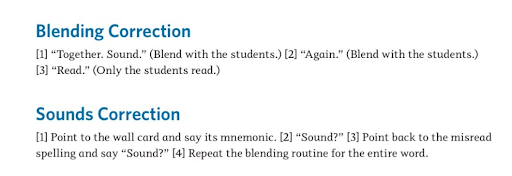Are you a LETRS-trained educator seeking tools to help you put your powerful learning into practice in your classroom? If so, this blog post by veteran literacy educator Kristy Nelson is for you.
 Kristy Nelson has worked in the Hopkins School District for 24 years, teaching kindergarten and fourth grade before transitioning into the role of a personalized learning coach, working with teachers to identify individualized supports to meet the needs of all students. Below she sheds light on how LETRS aligns with the SIPPS program.
Kristy Nelson has worked in the Hopkins School District for 24 years, teaching kindergarten and fourth grade before transitioning into the role of a personalized learning coach, working with teachers to identify individualized supports to meet the needs of all students. Below she sheds light on how LETRS aligns with the SIPPS program.
Despite decades of well-established research on the science of reading, teacher expertise in applying that science to practice varies widely from state to state and school to school. Teacher-prep programs are often inconsistent, with many offering little to no instruction about scientifically based reading instruction. To quote Dr. Louisa Moats, “We consolidated the research on what it takes to teach children to read way back in the early 1990s, and yet today a majority of teachers still haven’t been given the knowledge or instruction to effectively teach children to read.” (Stuart & Fugnitto, n.d.)
There are bright spots. An increasing number of teachers are getting the opportunity to build a deep understanding of the word recognition strands of phonological awareness, decoding, and sight word instruction through reading licensure courses or Language Essentials for Teachers of Reading and Spelling (LETRS) training. However, many others have had scant training in how to effectively teach students the foundational skills needed to become accurate, automatic readers. With this variation in practitioner knowledge, how can we provide every student with the key foundational instruction necessary for success?
As a former literacy coach and current personalized learning coach in Hopkins, Minnesota, a suburb just outside of Minneapolis, I hold this question near and dear to my heart. In my work, I have the privilege of supporting teachers in finding the tools and professional learning necessary to implement research-based practices that will meet the needs of all students.
Doing my job well requires a robust understanding of how students learn to read and the progression of this learning. Fortunately, the Hopkins Public Schools district, in partnership with the Minnesota Department of Education, gave teachers and coaches, including myself, the opportunity to participate in two years of intensive training in LETRS.
Following the completion of my LETRS training in the spring of 2021 and additional independent study about the science of reading, I pondered how best to help the teachers I support put this new learning into practice. As a first step, Hopkins adopted SIPPS as our intervention program in 2018, and we have been consistently using it ever since. But since many of our interventionists are non-licensed, they had little to no training in the science of reading. I began to wonder if implementation of the SIPPS program, even with intensive training and coaching, would provide the support necessary for student success.
If you’re unfamiliar with SIPPS, it is described as “a multilevel program that develops the word-recognition strategies and skills that enable students to become independent and confident readers and writers” (Center for the Collaborative Classroom & Shefelbine, 2020). Through its design, SIPPS is intended to provide systematic foundational skill instruction to K–12 students using explicit instructional routines.
Calling upon my LETRS training, knowledge of the science of reading, and expertise as a literacy coach, I hoped to answer two questions about SIPPS:
- If we implement SIPPS with fidelity, will we be providing students intensive, systematic, and explicit instruction aligned to LETRS and the Science of Reading?
- Does the SIPPS curriculum provide support to develop teacher understanding of scientifically based reading instruction and ensure fidelity of implementation?
In the following segment, I answer these questions by comparing SIPPS program offerings with quotes from a recent Collaborative Classroom interview with Dr. Moats about key elements of LETRS and what she specifically looks for in research-aligned reading instruction.
Question #1: If we implement SIPPS with fidelity, will we be providing students intensive, systematic, and explicit instruction aligned to LETRS and the science of reading?
What Dr. Moats says:
“[I]deally, there should be explicit instruction in foundational skills for approximately 45 minutes daily that follows a lesson routine: review, explain the concept, provide guided practice, provide more (independent practice), spell and write to dictation, read decodable text.”
What SIPPS delivers:

Review (SIPPS Component—Rereading a Story):
- Students begin each 30–50 minute SIPPS lesson by rereading a story to ensure application of previously learned skills and to build accuracy
Explain the Concept (SIPPS Components—Phonological Awareness, Phonics and Decodable Words, and Sight Words):
- Students engage in phonological awareness activities beginning with simple skills such as blending syllables, then moving towards more complex skills, including manipulation of individual phonemes.
- During the phonics/decodable word segment of the lesson, student learning is focused on the alphabetic principle, beginning with spelling-sound relationships, and then applying this learning as they read phonetically-spelled words. Through teacher modeling and choral response, we ensure that all students are actively engaged and are attaining the lesson goals.
- Students learn sight words through a “Read, Spell, Read, Spell, Read” routine. This routine focuses students’ attention on all the letters within the word in a left to right sequence, thus helping students see the link between the speech-sound system and the orthographic (spelling) system.
Provide Guided Practice & Independent Practice (SIPPS Components—Phonological Awareness, Phonics and Decodable Words, and Sight Words):
- Each new instructional routine is taught by the teacher modeling the skill, students practicing with the teacher, and students working independently of the teacher response.
Read Decodable Text (SIPPS Component-—Reading a Story):
- New phonics skills and sight words are immediately applied as students engage in reading connected text. Reading connected text supports students’ accuracy, fluency, and comprehension.

Spell and Write to Dictation (SIPPS Component—Guided Spelling and Segmentation):
- During guided spelling, students are supported as they write decodable words that follow taught patterns, common sight words, and complete sentences.
Additional SIPPS Component—Fluency Practice:
- At the end of each lesson, students are given the opportunity to build accuracy and automaticity as they reread texts from previous days of instruction. This rereading routine builds fluency, confidence and a sense of self-efficacy within students.
What Dr. Moats says:
“We focus on teaching priority skills such as phonology, phonics, vocabulary, fluency, and comprehension that need to be taught during reading and spelling lessons to obtain the best results for all students.”
What SIPPS delivers:
SIPPS lessons are aligned to students’ needs based on their level of mastery of standards along the phonological awareness and phonics continuum. Students are placed at their instructional level to support skills that they have already mastered and to link new learning to previous learning.
SIPPS Beginning, Extension, and Plus levels support students in learning the alphabetic principle while SIPPS Challenge level supports students’ mastery of polysyllabic word decoding and vocabulary as they learn prefixes, suffixes, and word roots.

What Dr. Moats says:
“[R]esearchers have known for a very long time how many times a struggling reader needs to look at a word in order to form a mental map between the print and speech. It can take children as many as 40 times before they recognize it as a whole word.”
What SIPPS delivers:
Sight word review through the Read, Spell, Read routine gives students an opportunity to closely examine a word and see it in context in connected text to reinforce the pathway to working memory. Students have the opportunity to practice previously learned sight words and learn new words during each and every SIPPS lesson. In addition, the fluency practice that is built into each lesson provides students opportunities to re-engage with previously read texts to support automaticity with word recognition.
What Dr. Moats says:
“Intervention materials should be aligned with [Tier 1] classroom instructional materials but provide more intensive practice.”
What SIPPS delivers:
We are fortunate in the Hopkins School District to use Being a Reader as our Tier 1 reading curriculum. The scope and sequence and instructional routines in Being a Reader and SIPPS, respectively, are intentionally aligned, providing a seamless transition to instruction within the SIPPS program as our Tier 2 intervention. The addition of multi-sensory components in SIPPS allows for further intensification for students in need of Tier 3 support.
Question 2: Does the SIPPS curriculum provide support to develop teacher understanding of scientifically based reading instruction and ensure fidelity of implementation?
What Dr. Moats says:
“LETRS empowers teachers to understand the what, why, and how of scientifically based reading instruction.”
What SIPPS delivers:
To ensure that teachers have a strong understanding of the what, why, and how of scientifically based reading instruction, the SIPPS program provides background information for each instructional routine. This background information is key in building teacher knowledge around the principles of scientifically based reading instruction.

What Dr. Moats says:
“The way we help teachers apply this knowledge (of scientific research) is by demonstrating instructional routines, activities, and approaches that will allow them to address the needs of all of their students.”
What SIPPS delivers:
Clear, explicit routines are the cornerstone of SIPPS lessons at all levels. Each of these routines is described in detail within the lesson to provide in-the-moment instructional support. Each routine is also described in Appendix A of the Teacher’s Manual, and video animations for each routine are included to support teacher implementation and ensure fidelity.

What Dr. Moats says:
“Educators who have the necessary knowledge are able to anticipate where students will struggle and can give effective corrective feedback.”
What SIPPS delivers:
Throughout the SIPPS program, teachers are asked to reflect on student learning and to provide clear, consistent corrective feedback. Starting with the placement assessment, teachers make instructional decisions based on the data they collect and their knowledge of students. Multiple entry points into the program allow teachers to consider what students have already mastered and what skills they still need to learn.
As they learn each new routine, teachers are also given clear correction procedures to support students in moments of need. These correction routines help students build independence and put the responsibility for learning back on students.

Reflecting on My Analysis
While this analysis is not an exhaustive representation of the ways in which the SIPPS program supports the science of reading and the essentials of LETRS training, it has shown that implementing the program serves a dual role. First, SIPPS provides students the intensive, explicit, systematic instruction they need to become accurate, automatic readers. Second, teachers using SIPPS will gain knowledge of the science of reading essentials, while also being supported with instructional guidance that is built into the program.
In reflection, it is clear that SIPPS is aligned to evidence-based practices, provides extensive support for implementation, and is engaging for all learners. If we implement SIPPS with fidelity, I believe both educators and students will gain confidence and feel competent, learning key foundational literacy skills.
You can learn more about how the SIPPS program supports the elements of LETRS training in the supporting document entitled LETRS and the SIPPS Program.
References
Stuart, K. & Fugnitto, G. (n.d.), “A Conversation about the Science of Reading and Early Reading Instruction with Dr. Louisa Moats.” Center for the Collaborative Classroom. https://www.collaborativeclassroom.org/blog/the-science-of-reading-with-dr-louisa-moats/.
Center for the Collaborative Classroom & Shefelbine, J. (2020). SIPPS Beginning Level Teacher’s Manual (4th ed.), p. vii.
© 2022 Lexia. All rights reserved. This in no way constitutes an endorsement from Lexia for the services or programs offered or the information conveyed.
